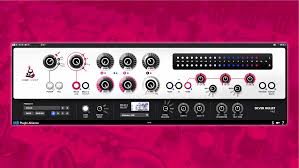What Are Baitcasters Good For? A Complete Guide for Anglers

Have you ever walked into a tackle shop, noticed those sleek baitcasting reels lined up on the shelves, and wondered, what exactly are baitcasters good for? If so, you’re not alone. Many anglers, especially beginners, find themselves curious about this type of reel. Baitcasters often look more advanced than spinning reels, and they certainly come with their own set of advantages. But are they worth the learning curve?
The truth is, baitcasters shine in areas where precision, control, and power matter most. Whether you’re chasing bass in heavy cover, flipping jigs under docks, or casting large lures into the wind, a baitcaster can make your fishing game stronger. In this article, we’ll explore everything you need to know about what baitcasters are good for, why anglers love them, and how they can elevate your fishing experience.
Understanding Baitcasters: More Than Just a Reel
Before diving into the benefits, let’s first understand what a baitcaster is. Unlike spinning reels, which hang below the rod, baitcasting reels sit on top. The spool of a baitcaster rotates as you cast, allowing the line to come off directly in line with the guides.
This design gives anglers more control but also requires a bit of skill. You’ve probably heard people mention “backlash” or “bird’s nests” when talking about baitcasters. That happens when the spool spins faster than the line can leave, creating tangles. With practice, though, controlling the spool becomes second nature, and the payoff is huge.
Precision Casting: Why Accuracy Matters
One of the biggest advantages of a baitcaster is accuracy. Anglers often need to place their lure in tight spots—under overhanging trees, between dock pilings, or right next to structure where fish hide.
With a baitcaster, you can feather the spool with your thumb and stop the lure exactly where you want it to land. This level of precision is much harder to achieve with a spinning reel. If you’re targeting bass that love to sit in cover, this accuracy can mean the difference between a strike and an empty cast.
Power and Control for Bigger Fish
Another strength of baitcasters is power. These reels are built with strong gears and provide greater torque, making them ideal for pulling fish out of heavy cover. If you hook into a largemouth bass hiding in weeds, a baitcaster gives you the leverage to muscle it out without losing control.
Because of their design, baitcasters also handle heavier lines more effectively. While spinning reels work well with light lines, baitcasters thrive with stronger lines like 15- to 25-pound fluorocarbon or braid. That extra strength is crucial when fishing for bigger species or in tough conditions.
Ideal for Heavy Lures
Have you ever tried casting a heavy lure with a spinning reel and felt it struggle? That’s where baitcasters shine. They’re perfect for throwing large swimbaits, spinnerbaits, crankbaits, or jigs. The rotating spool allows the line to flow smoothly, which makes handling heavier lures easier and more efficient.
This ability to manage weight also reduces strain on your wrist and arm, making long fishing days more comfortable. Anglers who spend hours casting big baits often prefer baitcasters for this reason alone.
Long Casting Distances
When set up correctly, baitcasters can cast farther than spinning reels, especially with heavier lures. Because the spool spins with the cast, there’s less friction on the line compared to a spinning reel. This design allows the lure to travel greater distances, reaching fish that are farther away.
Of course, it takes some practice to fine-tune your casting technique. Once mastered, though, baitcasters give you impressive range and control over distance.
Versatility Across Techniques
Baitcasters aren’t just about power—they’re versatile tools that can be used for a wide variety of fishing techniques. Here are a few situations where they excel:
- Flipping and Pitching: Perfect for short, accurate presentations in heavy cover.
- Topwater Fishing: Ideal for working walking baits or poppers with precision.
- Crankbait Fishing: Their smooth retrieve helps keep crankbaits running at the right depth.
- Jigging: Offers control for bottom presentations where feel and sensitivity matter.
- Frogging: Handles heavy braid and gives the strength needed to pull fish from thick vegetation.
This versatility makes baitcasters a go-to choice for serious bass anglers and many others targeting freshwater predators.
Durability and Strength
Because baitcasters are often built with stronger materials and components, they tend to last longer under heavy use. Anglers who fish regularly for large, powerful species appreciate this durability. The gearing system inside a baitcaster is designed to handle stress without wearing down as quickly as some spinning reels might.
That doesn’t mean spinning reels aren’t durable, but when it comes to repeated battles with strong fish, baitcasters hold an edge.
Better Line Management
Another perk of baitcasters is superior line management. Since the line comes straight off the spool, it stays tighter and more controlled during casts and retrieves. This means less line twist, a common problem with spinning reels.
Anglers who use braid especially appreciate this, as baitcasters handle braided line exceptionally well. The direct line flow also helps when using fluorocarbon, which can sometimes coil on spinning reels.
Learning Curve: The Challenge of Backlash
Of course, it’s only fair to mention the biggest drawback of baitcasters—backlash. If you’ve ever seen a reel filled with a tangled mess of line, that’s what happens when the spool spins faster than the lure can pull line out.
Backlash can be frustrating for beginners, but it’s not a deal-breaker. With practice, proper thumb control, and by adjusting the reel’s braking system, you can minimize or even eliminate it. Most modern baitcasters also come with advanced braking systems that make learning easier than ever before.
Comparing Baitcasters and Spinning Reels
To really appreciate what baitcasters are good for, it helps to compare them directly to spinning reels:
- Baitcasters excel with heavy lures, stronger lines, and situations requiring accuracy and power.
- Spinning reels shine with lighter lures, finesse techniques, and when casting into the wind.
Neither is better in every situation. Many experienced anglers carry both types of reels so they can switch depending on the conditions.
Situations Where Baitcasters Truly Shine
So, when should you definitely consider using a baitcaster? Here are some examples:
- Bass Fishing in Heavy Cover – When you need to pull fish out of weeds or timber.
- Fishing with Big Lures – Swimbaits, jigs, or large crankbaits cast better on a baitcaster.
- Targeting Larger Species – Pike, muskie, and even some saltwater species.
- Long Days on the Water – The ergonomics of baitcasters make repeated casting less tiring.
- When Accuracy is Key – Dock fishing, pitching, and skipping lures under overhangs.
These situations highlight why so many anglers eventually add baitcasters to their lineup.
Stories From the Water: Anglers and Their Baitcasters
Ask any experienced fisherman about their first baitcaster, and you’re bound to hear a mix of frustration and pride. Many will laugh about their first backlashes but also share how rewarding it felt once they mastered it.
Anglers often describe the switch to baitcasters as a milestone. It marks a point where they moved from casual fishing to a more dedicated approach. And once they got comfortable, many say they can’t imagine fishing without one.
Are Baitcasters Good for Beginners?
This is a common question, and the answer depends on your goals. If you’re brand new to fishing, a spinning reel might be easier to start with. But if you’re serious about learning advanced techniques, starting with a baitcaster is not a bad idea.
Modern baitcasters with magnetic or centrifugal brakes make the learning process smoother than in the past. With patience and practice, even beginners can master them fairly quickly.
Maintenance and Care
Like all fishing gear, baitcasters perform best with regular maintenance. Cleaning the spool, oiling the gears, and checking the drag system ensure smooth performance. Because they have more moving parts than spinning reels, they benefit from extra attention.
The good news is that with proper care, a quality baitcaster can last for years, becoming a trusted companion on countless fishing trips.
Final Thoughts: Why Baitcasters Are Worth It
So, what are baitcasters good for? The answer is simple—they’re great for situations where accuracy, power, and control matter most. They excel with heavy lures, handle stronger lines, and give you the precision needed for challenging casts.
Yes, they come with a learning curve, but the rewards are worth it. Once you get past the initial frustration, a baitcaster opens up a new level of fishing. It’s no wonder so many seasoned anglers swear by them.
If you’re ready to take your fishing skills to the next level, don’t shy away from trying a baitcaster. With practice, patience, and maybe a few bird’s nests along the way, you’ll soon see why these reels are trusted by anglers all over the world.



